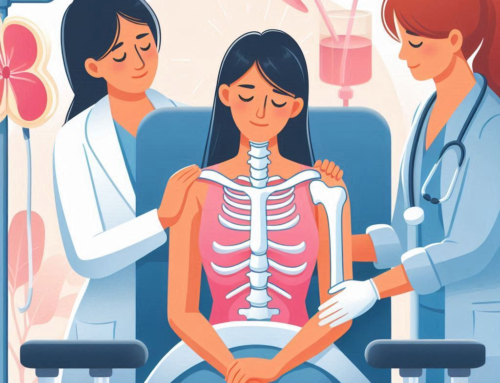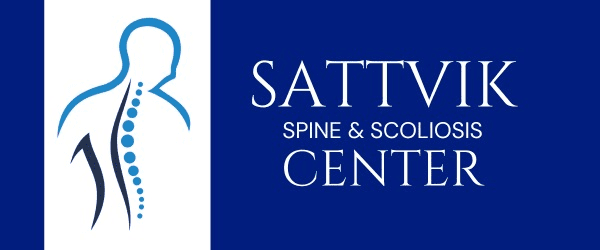What is Tuberculosis of the Spine?
Tuberculosis of the spine, also known as Pott’s disease, is a serious and rare condition that affects the spinal column. It is a form of spinal tuberculosis caused by the bacterium Mycobacterium tuberculosis, which is the same bacteria that causes tuberculosis in the lungs. Tuberculosis of the Spine is a rare but serious condition that can cause severe pain and discomfort in the affected area of the spine. It is a chronic condition that can lead to permanent disability if not treated properly.
Pott’s disease most commonly affects the thoracic and lumbar regions of the spine, but it can also affect the cervical and sacral regions. It is a progressive disease that can cause severe damage to the vertebrae and the surrounding structures, such as the spinal cord and nerves.
Symptoms of Tuberculosis of the Spine
The most common symptoms of Tuberculosis of the Spine include chronic pain in the back or neck, stiffness in the affected area, and difficulty standing or walking. In advanced cases, the disease can cause nerve compression, which results in weakness, numbness, or tingling in the arms and legs.
Additionally, Pott’s disease can also lead to loss of sensation, muscle weakness, and paralysis. In some cases, it may even cause bowel and bladder dysfunction. The patient may also experience fever, weight loss, and night sweats. These symptoms may develop gradually over a period of weeks or months, or they may appear suddenly and progress rapidly.
The early stages of Pott’s disease may not cause any symptoms, which makes it difficult to diagnose the condition. But as the disease progresses, the patient may start experiencing severe pain in the affected area, which can be aggravated by movement or pressure on the spine. This pain can be debilitating and can severely affect the patient’s quality of life. Kyphosis, which is a characteristic hump in the upper back, is another common symptom of Pott’s disease. This occurs when the affected vertebrae collapse and cause the spine to curve forward. Kyphosis can cause difficulty in breathing, and can also lead to an abnormal gait and a hunched-over posture. In severe cases, kyphosis can lead to permanent disability and loss of independence.
Causes of Tuberculosis of the Spine
The exact cause of Pott’s disease is not fully understood, but it is believed to be caused by the spread of infectious bacteria called Mycobacterium tuberculosis (Mtb) from the lungs to the spine. If left untreated, the bacteria can infect the joints in the spine, causing spinal arthritis. As the infection progresses and affects two or more contiguous joints, the spinal disc loses its ability to receive proper nutrition and starts to deteriorate. As a result, the disc collapses, and the vertebrae begin to narrow and collapse as well, leading to damage to the spinal cord.
One of the most significant risk factors is a weakened immune system, which can occur as a result of HIV/AIDS, malnutrition, or other chronic illnesses. People with weakened immune systems are more susceptible to infections, including tuberculosis. This is because the immune system plays a crucial role in fighting off infections. When it is compromised, it is unable to effectively combat the bacteria that cause tuberculosis.
If Pott’s disease is not treated, it can lead to serious complications such as nerve damage, paralysis, and deformities in the back. It is estimated that 1-2% of patients who have pulmonary (lung) tuberculosis will go on to develop Pott’s disease.
Diagnosis of Tuberculosis of the Spine
Diagnosis of Pott’s disease typically begins with a thorough physical examination and a review of the patient’s medical history. The physician will ask about the patient’s symptoms, such as back pain, stiffness, and difficulty standing or walking. They will also ask about any risk factors the patient may have, like a history of tuberculosis.
Imaging studies are an important part of the diagnostic process for Pott’s disease. X-rays and CT scans can be used to confirm the diagnosis and assess the extent of the disease. These imaging studies can help to identify characteristic changes in the vertebrae that are indicative of Pott’s disease, such as collapse or narrowing of the vertebral bodies. They can also help to identify any complications of the disease, such as nerve compression or kyphosis.
In some cases, a biopsy may be necessary to confirm the diagnosis and to rule out other conditions. A biopsy involves taking a small sample of tissue from the affected area, which is then examined under a microscope to identify the presence of tuberculosis bacteria. This is an invasive procedure. It is typically only used if the diagnosis is not clear based on imaging studies and clinical presentation alone.
Treatment for Tuberculosis of the Spine
Treatment of Tuberculosis of the Spine typically involves a combination of medications and surgery. The primary goal of treatment is to eliminate the tuberculosis bacteria and to prevent the disease from spreading further.
Medications
The most common medication used to treat Pott’s disease is a combination of drugs known as anti-tubercular therapy (ATT). These drugs are typically administered for a period of 6 to 12 months. It depends on the severity of the disease and the patient’s response to treatment. The treatment is usually administered on an outpatient basis, and patients are typically seen by their healthcare provider on a regular basis to monitor their progress.
Surgery
Surgery is also often necessary to correct the deformities caused by the disease and to relieve pressure on the spinal cord and nerves. Moreover, surgery options include:
- Vertebral fusion involves joining together two or more vertebrae to stabilize the spine.
- Spinal decompression involves removing part of the affected vertebrae to relieve pressure on the nerves.
It is wise to consult with the best spine surgeon in Bangalore for effective and accurate treatment.
Physical therapy may also be necessary to help the patient regain strength and mobility after treatment. Physical therapy can help to reduce pain and improve the patient’s ability to move and perform daily activities.
It is important to note that treatment of Pott’s disease is a long-term process and requires close monitoring and follow-up to ensure that the patient is responding to treatment and to identify any potential complications.
Recovery
Recovery from Tuberculosis of the Spine can be a long and difficult process. Patients typically require several months of treatment with ATT. Also, they may need multiple surgeries to correct the deformities caused by the disease. Physical therapy and rehabilitation are also important to help patients regain strength and mobility.
In addition to the physical effects of Pott’s disease, the condition can also have a significant impact on a patient’s quality of life. Patients may experience chronic pain, difficulty standing or walking, and difficulty performing daily activities. They may also experience emotional and psychological distress as a result of the disease and its effects on their physical abilities.
Prevention for Tuberculosis of the Spine
Prevention of Tuberculosis of the Spine is primarily focused on preventing the spread of tuberculosis. The most effective way to prevent Pott’s disease is to identify and treat individuals who have active tuberculosis as soon as possible. This can be accomplished through regular tuberculosis screenings and testing. Particularly for individuals who are at a higher risk of contracting tuberculosis. For example, those who have a compromised immune system or who have been in close contact with someone who has active tuberculosis.
In addition to identifying and treating individuals with active tuberculosis, infection control measures must be implemented in healthcare settings. This will help in preventing the spread of the disease. This includes implementing measures like respiratory hygiene and cough manners. Also, ensuring that healthcare workers are properly trained on infection control protocols. It is also important to maintain proper ventilation in healthcare settings to reduce the risk of tuberculosis transmission.
Conclusion
Pott’s disease is a serious and debilitating condition caused by the bacterium Mycobacterium tuberculosis. It can cause severe pain, deformity, and nerve compression in the affected area of the spine. Treatment typically involves a combination of medications and surgery, and recovery can be a long and difficult process. Prevention of Pott’s disease is primarily focused on preventing the spread of tuberculosis.











Get Social